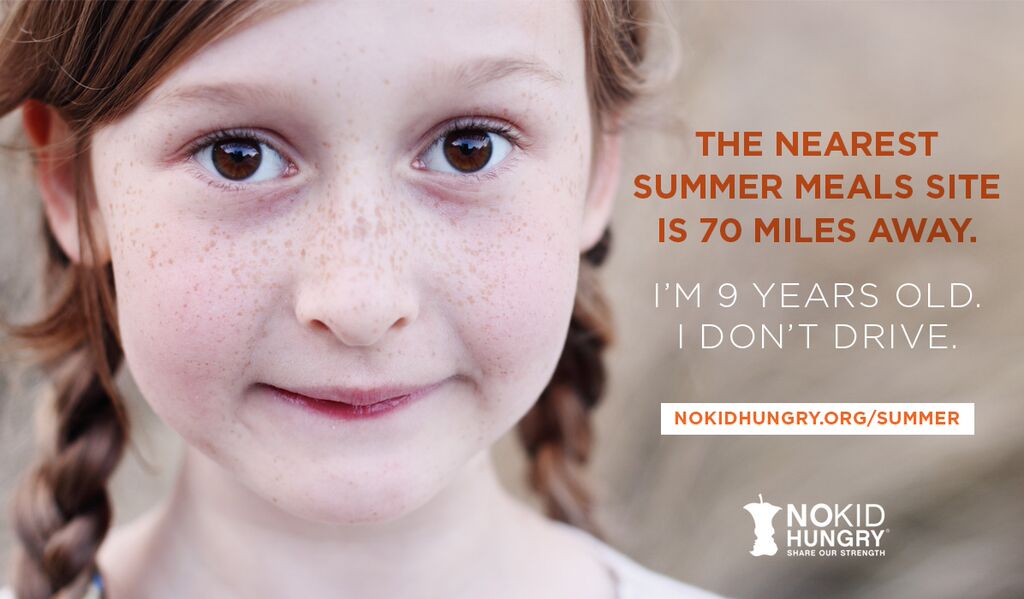Written by: Jeremy Everett, Director, Texas Hunger Initiative and Duke Storen, Senior Director, Research, Advocacy, and Partnership Development, Share Our Strength
For more than 18 million children across America, summer can mean hunger, anxiety, and learning loss, not picnics, pools, and fun. When school ends for the summer, so do the meals offered to children through the school breakfast and lunch programs. Children in rural communities face this summer hunger crisis because the program to replace school meals – the USDA Summer Food Service Program – is not designed to meet the needs of kids in rural America. Incredibly, less than 15 percent of needy children in rural America have access to USDA summer meals program during the summer months.
We can and must do better. Policymakers in Washington need to go outside the beltway so they can see that a one-size-fits-all programs doesn’t make sense for feeding kids in the summer. Programs, like the summer meals program, often aren’t set up to work the same way in big cities as they are in in rural communities.
The Summer Food Service Program requires kids to travel to meal sites which open only for a short time each day and consume those meals on premises. Unlike the school year when school buses run and kids eat lunch in the cafeteria, the transportation barriers make it impossible for most kids to find their way to a meal site and impossible for sites to stay open because there are not enough kids.
Let’s take Texas and Ohio as examples. A child living in the southwestern town of Valentine, Texas, would need to travel 95 miles each way every day – that’s 190 round trip – to access meals from the closest summer meal site in Presidio. Lisa Hamler-Fugitt, the executive director of the Ohio Association of Food Banks sees transportation challenges in her state, even when the distances aren’t as stark. “Last year, we met a 5-year-old boy who had been riding his bike, all alone, for miles along a rural highway to get to the closest summer meals site,” she told me. “Making this long, dangerous trip was the only way he was able have a healthy lunch every day during the summer. Under the current summer meals program, we weren’t allowed to drop meals off to him and he couldn’t take any food home with him for later.”
Feeding kids in the summer is an investment we can’t afford to pass up. When kids go hungry, it robs us of the best minds and the best talent for the future, while also leading to increased learning loss, expensive health issues, and lost productivity.
We can and must do better. This summer, Congress will take up the law that governs the Summer Food Service Program, and we must demand that our lawmakers make the program more flexible so that rural communities can ensure that their children get the nutrition they need to thrive.
Fortunately, we know what works, and so does Congress. Starting in 2011, USDA has been testing alternative ways to feed kids during the summer, and the results of those demonstration projects give Congress the common sense program options and data they need to improve the Summer Food Service Program so that it can meet the needs of children in rural America. These options include allowing programs to deliver meals to kids instead of making kids come to meals and giving low-income parents additional funds on their SNAP or WIC cards so they can purchase additional food for their children during the summer. The evaluations of these program options shows that they were able to reach more needy children and that those children consumed more fruits, vegetables, whole grains, and dairy.
We can and must do better. Anyone living in rural America or anyone who cares about the children living in rural America should contact their Member of Congress and ask them to authorize more options for feeding kids in the summer. Go to www.NoKidHungry.org/summer to take action.
